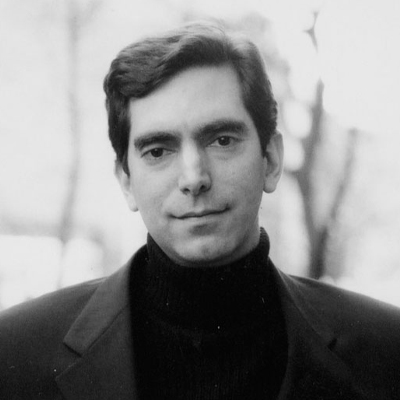
View this edition in our enhanced digital edition format with supporting visual insight and information.
Nothing says “time” like history! In this article, historian Barnet Schecter explores the role of history for the family firm today. Using examples from different sectors of New York City’s economy—commerce, manufacturing, hospitality, and news media, Barney suggests that “…in every age, an awareness of history can inspire and guide successive generations to define their place in the world and the values they wish to embody. Perceiving history as a dynamic, malleable process unfolding in real time, linking the past and future, can inspire purposeful, timely action.”
Knowledge of history can be a powerful force shaping a family’s view of its enterprise: its sense of mission, its values, and its timeframe for action. In this article, I’ll mention a few examples of family enterprises in New York City that both shaped and were shaped by the course of history. The backdrop and setting for all of these businesses is geological time, in which the city’s topography was formed during the Ice Age over tens of thousands of years, into a configuration of hills and sheltered waterways, with access to the hinterlands and the ocean, that made the city a thriving international port, a hub of trade.
The earliest European settlers of New Amsterdam—Walloon, Flemish, and Dutch families—established what soon became a relatively diverse community, with a variety of religions and nationalities coexisting under the aegis of the Dutch West India company, with the common purpose of profiting from the fur trade with the Lenape and the Iroquois. Because Dutch law gave even married women economic rights and autonomy, some owned businesses or managed the enterprises of their husbands who were away at sea or otherwise engaged in trade. Margaret Hardenbroeck De Vries Philipse married twice, had five children, and helped her family amass a mercantile and real estate empire—trading in furs, tobacco, textiles, molasses, and enslaved Africans—and spreading across the New York region south to Barbados.
When the British took over New Amsterdam and it became New York in the late 1600s, to some inhabitants it must have seemed that historical time was flowing backwards: British law degraded the status of women, depriving them of the right to retain premarital property, to own land or businesses, and to represent themselves in court—elements of Dutch law and society that made the Netherlands so forward-looking, so progressive, at the time.
While business opportunities in New York shrank for women in the English period, some continued to run family businesses as equal partners with their husbands. On Livingston Manor, the family’s vast Hudson Valley estate, Alida Livingston managed and sold enslaved workers, negotiated the price of wheat, supervised millers, bakers, and brewers, and traded with the Iroquois. Here we see historical time as less of a single forward-moving “arrow” and more like two ribbons unspooling next to each other: the legal reality constricted the rights of women, as if in a time-capsule, while the practical reality saw them acting independently.
As a colonial power, England sought to keep the industrial capabilities of its American possessions frozen in time as well. The secrets of metallurgical science were carefully guarded in England, leaving American manufacturing hobbled with a shortage of copper, tin, and other essential metals. As England moved forward with its industrial revolution in the 1700s, Americans were supposed to stay in an earlier stage of development, supplying the raw materials to England and providing a market for its finished goods. This stirred the Hendricks brothers and their family firm to innovate and pioneer the manufacture of copper, spearheading the industrial progress of the United States. In the War of 1812 they and one of their main customers, Paul Revere, sheathed the hulls of American ships with copper, as their family enterprise took on an urgent patriotic mission. Without their efforts, the US might have become sidetracked, on a separate ribbon of historical time, left behind as another advanced. The Hendricks family was forging the future through metallurgy, even as Britain wanted to keep American industry in the past.
During the decades leading up to the Civil War, the Lyons family—Albro, Mary, and their two daughters—ran a boarding house for Black workingmen near the seaport, in a neighborhood that housed several African American businesses, churches, and mutual-aid societies. The Lyons family’s boarding house was also a stop on the Underground Railroad, sheltering fugitives from slavery in the South, and a distribution center for abolitionist pamphlets. African Americans lived in two realities, two ribbons of historical time: Albro and Mary Lyons, and their peers in New York City’s Black elite and middle class were living in freedom in the North, in a rapidly growing urban center of industry and commerce, while enslaved Blacks in the South were trapped in an agricultural past, a static world of plantations and farms and social mores that had resisted modernity. The Lyons family provided shelter to the Black cooks, barbers, and sailors who lived somewhere in between, trapped in the most menial jobs—the only ones open to them. Activists like the Lyons family strove to pull other Blacks into the present, while forging a future in which slavery was in every sense a thing of the past.
A final example that brings us from the nineteenth century into the present, is the New York Times, the newspaper founded in 1851 and owned since 1896 by the Ochs-Sulzberger family dynasty. The current publisher, A.G. Sulzberger, recently gave a speech explaining the paper’s guiding principles:
“What independent journalism looks like in practice continually evolves. But at its heart it remains the same model of journalism my great-great-grandfather, Adolph Ochs, championed when he pledged in 1896 that the Times would ‘give the news impartially, without fear or favor, regardless of party, sect, or interests involved.’ Five generations of my family have made it our life’s work to honor that commitment…”
The Times strives to evenhandedly reflect the times in which it is reporting, says Sulzberger, without worrying whether it is on the right or wrong side of history:
“Simply put, journalists don’t serve the public by trying to predict history’s judgments, or to steer society to them. Our job as journalists is firmly rooted in the present: to arm society with the information and context it needs to thoughtfully grapple with issues of the day.”1
In this case, unlike the other examples I’ve offered, the successive generations of a family firm have made it their goal to stand outside of history and empower others to actively shape its trajectory. Nonetheless, it’s clear that an awareness of historical time and the family’s relationship to it is critical to forming its values.
So, what is the role of history for the family firm today? These examples from different sectors of New York City’s economy—commerce, manufacturing, hospitality, and news media—suggest that in every age, an awareness of history can inspire and guide successive generations to define their place in the world and the values they wish to embody. Perceiving history as a dynamic, malleable process unfolding in real time, linking the past and future, can inspire purposeful, timely action.
For some families, that will mean preserving timeless traditions and principles, while others will strive to effect change in society or within their firm. Some will aspire to do both. As A.G. Sulzberger notes, the practice of journalism evolves, but the principles remain constant. Niki Russ Federman, the fourth generation in charge of another New York landmark, Russ & Daughters, has expanded the iconic bagel-and-lox shop to multiple locations and now ships around the world. “It can evolve and grow,” she concludes, “as long as I appreciate and preserve the continuous throughlines.”2
References
1Sulzberger, A.G. “Journalistic Independence in a Time of Division,” Reuters Memorial Lecture, 2024, Oxford University, https://reutersinstitute.politics.ox.ac.uk/news/full-text-g-sulzbergers-2024-reuters-memorial-lecture-journalistic-independence-time-division
2Whittemore, Katharine. “How Niki Russ Federman ’99 Became the Fourth Generation in Charge of a New York Landmark,” Amherst, Spring 2023, 22.
About the Contributor

Barnet Schecter, an independent historian, was the keynote presenter at the 2023 FFI Global Conference. He is the author of George Washington’s America: A Biography Through His Maps, The Devil’s Own Work: The Civil War Draft Riots and the Fight to Reconstruct America, and The Battle for New York: The City at the Heart of the American Revolution. He is a contributor to the Encyclopedia of New York City and various books on the Revolution and Civil War. In addition to lecturing and leading tours, he consults on books, exhibitions, and films and appears on the History Channel and C-SPAN. He is currently writing a book about anti-slavery activity during the Revolution and the founding era. He can be reached at barnetschecter@gmail.com.

View this edition in our enhanced digital edition format with supporting visual insight and information.





